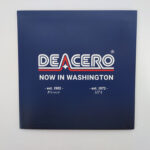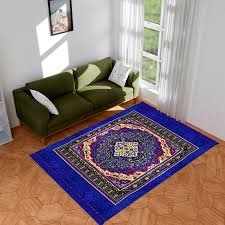Introduction
Historical Context and Cultural Significance
Carpets and rugs are more than mere floor coverings; they are woven legacies. Tracing their roots to ancient Persia, Central Asia, and Anatolia, these textiles have long held ceremonial, decorative, and utilitarian value. Once symbols of affluence and artistry, hand-knotted carpets adorned palaces, temples, and nomadic tents. In many cultures, rugs conveyed social status, spiritual symbolism, and regional identity each motif telling a story passed through generations.
For more info please visit: https://market.us/report/carpet-and-rug-market/
Modern-Day Applications and Aesthetic Value
Today, carpets and rugs serve as foundational elements in both residential and commercial interiors. They temper acoustics, define spaces, and introduce texture and warmth. Beyond function, they’re seen as canvases for modern design, often blending minimalist forms with eclectic patterns. The transition from utilitarian necessity to design statement has elevated their status in the architecture and decor sectors worldwide.
Global Market Overview
Market Size and Growth Trajectory
The global carpet and rug market, valued at over USD 80 billion, is on an upward trajectory fueled by rapid urbanization, increased disposable income, and a booming real estate sector. Forecasts suggest a compound annual growth rate (CAGR) of approximately 4–5% through 2030. North America leads in market share, but Asia-Pacific is emerging as a dynamic growth engine, propelled by infrastructure development and a growing middle class.
Key Geographic Regions and Their Influence
Different regions contribute unique flavors to the market. Iran, India, and Turkey continue to dominate the handmade segment, blending ancient craftsmanship with contemporary demand. Meanwhile, the United States, Germany, and China steer the mass-produced sector, investing heavily in mechanized looms and synthetic materials. Regional preferences—be it the Scandinavian penchant for minimalism or Middle Eastern opulence—heavily influence design outputs and material choices.
Materials, Techniques, and Innovations
Traditional Materials vs. Synthetic Alternatives
Wool, silk, cotton these are the stalwarts of traditional rug-making. Each fiber brings unique tactile and visual properties. However, the rise of synthetic fibers like nylon, polyester, and polypropylene has disrupted the supply chain. These alternatives, while cost-effective and stain-resistant, often sacrifice authenticity for affordability. The ongoing tug-of-war between purity and practicality defines much of today’s market dynamics.
Technological Innovations in Weaving and Dyeing
Digital dye injection, automated tufting, and robotic looms have revolutionized production. Intricate patterns once requiring weeks now emerge in hours. Precision weaving ensures consistency across large volumes, while dye technologies minimize water waste and allow for hyper-customization. Technology has democratized design, enabling smaller brands to experiment with bold visuals and adaptive textures without exorbitant costs.
Sustainable and Eco-Friendly Practices
Sustainability is no longer optional—it’s imperative. Brands are investing in biodegradable fibers, natural dyes, and closed-loop production systems. Jute, bamboo silk, and recycled PET yarns are gaining traction. Certifications like GOTS (Global Organic Textile Standard) and GoodWeave are helping consumers make informed, ethical choices. The confluence of eco-consciousness and artisanal tradition is birthing a new genre of rugs—both aesthetically captivating and environmentally sound.
Market Segmentation and Consumer Preferences
Residential vs. Commercial Demand
In homes, carpets convey warmth and individuality. Plush textures dominate bedrooms, while flat weaves find favor in high-traffic living areas. Conversely, commercial spaces prioritize durability, fire resistance, and acoustic absorption. Modular carpet tiles, with their flexibility and ease of maintenance, are particularly favored in corporate environments and hospitality sectors.
Emerging Trends in Design and Functionality
Maximalist motifs, abstract geometrics, and heritage-inspired designs are enjoying a renaissance. Rugs are no longer confined to the floor—they’re draped on walls, used as tapestries, or repurposed as furniture upholstery. Functional innovations like anti-microbial coatings and smart textiles (that adjust to room temperature or lighting) are emerging. The line between form and function continues to blur.
Influence of Interior Design Movements
From Japandi to Brutalism, interior design movements strongly shape rug trends. Minimalist interiors favor monochrome or textural neutrality, while bohemian styles embrace layered patterns and global motifs. Designers are increasingly curating bespoke rugs to anchor thematic compositions proof that rugs are no longer accessories but narrative drivers within a space.
For more info please visit: https://market.us/report/carpet-and-rug-market/
Challenges and Future Outlook
Supply Chain Volatility and Raw Material Costs
Global tensions, climatic unpredictability, and fluctuating oil prices are making raw materials either scarce or expensive. Wool prices have surged, and synthetic resin supplies face disruption. Transportation delays further strain timelines. Manufacturers must adopt agile sourcing strategies to mitigate volatility without compromising on quality.
Regulatory and Environmental Constraints
Governments worldwide are tightening regulations on chemical dyes, emissions from production facilities, and labor practices in rug-making communities. Compliance is not only costly but demands deep restructuring of legacy processes. Brands failing to adapt risk reputational damage and market exclusion.
Forecast and Strategic Opportunities
The path ahead is laced with promise. Hybrid rugs (combining handmade and machine-made elements), augmented reality-enabled try-before-you-buy tools, and direct-to-consumer platforms are transforming the customer experience. With digital design and ethical production gaining momentum, the next decade will reward those who blend craftsmanship with conscience.
Conclusion
The carpet and rug market is a rich tapestry both literally and figuratively. It straddles the old and the new, the artisanal and the automated, the decorative and the durable. As consumer consciousness deepens and design sensibilities evolve, the industry must continue to innovate while honoring its woven heritage.
- Sustainable Fibers, Global Markets: The New Era of Rugs and Carpets
- Explore the evolving landscape of the global carpet and rug market—covering materials, design innovations, regional trends, and the growing demand for sustainable and smart flooring solutions.
- #CarpetIndustry #RugMarket #InteriorDesignTrends #SustainableFlooring #HomeDecor #EcoFriendlyMaterials #SmartHomeTech #TextileInnovation #FlooringSolutions #CommercialInteriors #UrbanLiving #ArtisanCraftsmanship #HomeImprovement #ModularDesign #GlobalMarketTrends
Related posts:
 Luxury or Budget? Finding the Right Heathrow Transfer for You
Luxury or Budget? Finding the Right Heathrow Transfer for You
 What Is Cold Rolled Stainless Steel Coil and Why Does It Matter?
What Is Cold Rolled Stainless Steel Coil and Why Does It Matter?
 Make Impact with Commercial Signs Raleigh NC: A Strategic Guide to Business Success
Make Impact with Commercial Signs Raleigh NC: A Strategic Guide to Business Success
 PEX vs Copper in New Homes: What’s Right for You? | Creative Repipe
PEX vs Copper in New Homes: What’s Right for You? | Creative Repipe
 When Best Stock Market Institute Delhi Becomes Your Turning Point Forever
When Best Stock Market Institute Delhi Becomes Your Turning Point Forever
 Learn Advanced Derivatives Trading Course from ICFM and Build Expertise in Financial Market Strategies
Learn Advanced Derivatives Trading Course from ICFM and Build Expertise in Financial Market Strategies
 Detailed Market Analysis on Air Conditioner Market | Share, Size & Outlook
Detailed Market Analysis on Air Conditioner Market | Share, Size & Outlook
 Best Stock Market Course For Beginners Only At ICFM – Stock Market Institute India
Best Stock Market Course For Beginners Only At ICFM – Stock Market Institute India







